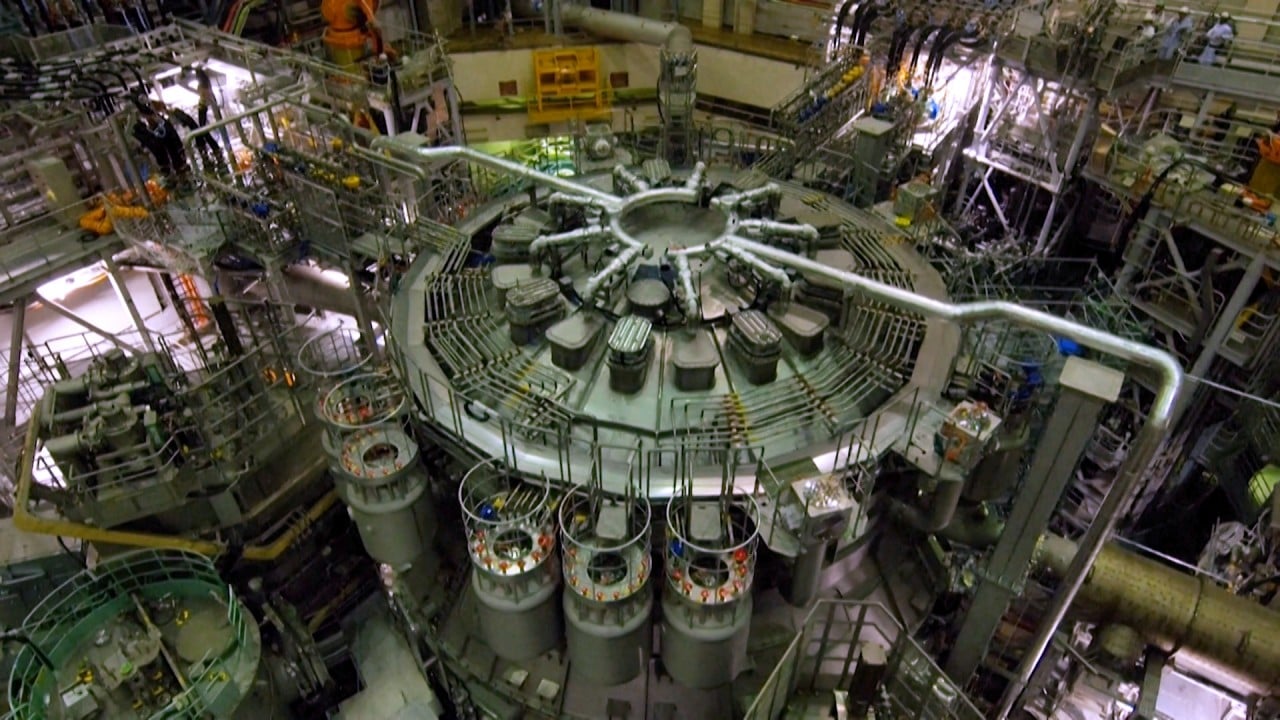
‘Two sessions’ 2024: China’s construction of the world’s largest particle collider may start in 2027
- The Circular Electron Positron Collider, known as a Higgs factory, will take a decade to build and become the next global centre of particle physics: Wang Yifang
- Since first proposed in 2012, there have been doubts over the high cost and technical readiness of the CEPC project
Construction of the world’s largest particle collider could begin in China in three years, although it must still win government approval and secure funding, a leading scientist said.
The 36 billion yuan (US$5 billion) Circular Electron Positron Collider (CEPC), also known as a Higgs factory, will take about 10 years to build and become the next global centre of particle physics, according to Wang Yifang, director of the Institute of High Energy Physics in Beijing.
By accelerating electrons and their antiparticles – positrons – in a 100km-long (62-mile) underground tunnel to extremely high energies and smashing them into each other, the CEPC will create millions of Higgs bosons and allow scientists to make new discoveries beyond the Standard Model – our existing best theory to describe the basic building blocks of the universe.
The ambitious project would also help China rise into a world leader and “pacemaker” in the field of high-energy physics, Wang told the Global Times during the National People’s Congress on Thursday.
He said the CEPC “technical design report” – which took more than 1,000 scientists from 24 countries five years to compile – had passed an international review and was met with “overwhelming feedback” from the physics community when it was released in December.
The report, together with numerous prototype devices built and experiments run by his team in the past decade, “proved our ability to design and build such a large scientific facility”, he said.
The CEPC concept was first proposed by Wang and his colleagues in 2012 after the Higgs boson – the “God particle” that gives almost all other particles their mass – was discovered using Europe’s Large Hadron Collider (LHC).
Chinese team uses Tibetan Plateau telescope to test constancy of speed of light
The CEPC could end up “a bottomless pit” given its multibillion price tag, Yang warned, comparing it to the Superconducting Super Collider in the US which was eventually cancelled by Congress in the 1990s.
Wang admitted that “36 billion yuan is not cheap”. However, if the CEPC could support the work of thousands of scientists for decades to come, their average cost would not be that high, he told the Global Times.
Wang did not reveal when they planned to propose the CEPC to the National Development and Reform Commission, the country’s top economic planner, for approval. According to the technical design report, funding scenarios are being considered, with expected contributions from the central government, local governments and international partners.
Work on the CEPC would now enter the so-called engineering design phase, Wang said. It includes the mass production and assembly of parts of the collider, as well as optimising their performance and cost-effectiveness.
His team would also finalise the site for the CEPC soon, he added. Wang said there would be a comprehensive evaluation based on the site’s geological conditions, transport and local infrastructure given that the CEPC would be hosting scientists from around the world and factors such as their children’s education would need to be considered.
Candidate sites include Qinhuangdao in Hebei province, Huzhou in Zhejiang province and Changsha in Hunan province, according to the institute’s website.
China’s Super Tau-Charm Facility particle collider to test theory of matter
Meanwhile in Europe, a similar project named the Future Circular Collider is being considered to serve as a future Higgs factory and successor of the Large Hadron Collider.
As the world’s largest atom smasher, the LHC has a circumference of 27km. The Future Circular Collider’s circumference could reach 100km, with a price tag of about €21 billion (US$23 billion).



